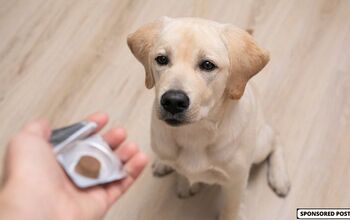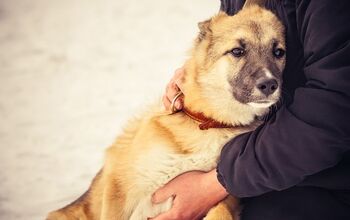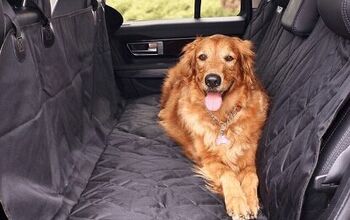How to Protect Your Car on Road Trips with Your Pet

Travelling with your pet is a fun experience, sharing adventures and building that special bond with one another on the open road. However, as responsible pet parents, we also acknowledge the challenges of including our best friend in our travel plans: concerns regarding car cleanliness, lingering smells, and potential damage to the vehicle’s interior.
In this guide, I’m going to share practical and actionable tips to help you enjoy a comfortable journey with your pet while also protecting your vehicle from my own experiences hitting the road with my furry crew by my side. You can have your cake and eat it, too!
Pre-Trip Pet Preparation: Setting Yourself Up for Success
Before heading out on the road, there are steps you can take to lay the groundwork for a comfortable, enjoyable trip. These are simple considerations that can make a world of difference in keeping your cat spotless and damage-free.
Make Time for a Grooming Session
Start your preparations with a thorough grooming session. Taking the time to brush and deshed your pet before loading them into the car will help effectively reduce the amount of loose fur that will inevitably end up in your vehicle. Tools like deshedding brushes or grooming gloves are both helpful during this process.
Beyond shedding, nail trimming is another critical consideration. Trimmed nails prevent unwanted scratches on your car upholstery, windows, and interior plastics. If you have a dog who is uncomfortable with having their nails trimmed, consider introducing a scratch board to help keep their nails short and well-maintained.
Finally, make a habit of cleaning your pet’s paws each time before they enter the car, especially after any outdoor play or potty breaks, to minimize tracked-in dirt, mud, and debris.
Plan for Ideal Mealtime Schedules
Approaching your pet’s eating and drinking routine before a trip strategically can help prevent accidents and motion sickness.
While keeping your pet hydrated should always be a top priority, consider limiting water intake slightly an hour or two before any travels to reduce the frequency of needing to go to the bathroom. This doesn’t mean you’ll be completely withholding water. Instead, pack a pet-friendly water bottle and offer small drinks each time you stop to prevent dehydration while still avoiding that troublesome, overly full bladder.
Similarly, avoid giving your pet a big meal right before travel. Instead, consider offering a light, easy-to-digest meal well in advance, giving them time to digest and go to the bathroom before hitting the road. Not only does this help prevent accidents, but it can also go far in avoiding upset stomachs and potential vomiting.
Don’t Forget the Last-Minute Potty Break
Of course, beyond all these preparations, the all-important bathroom break just before you leave is non-negotiable. This quick stop will help drastically reduce the risk of in-car accidents. It’s also a good chance to watch for any signs of nausea, giving you a much-needed red flag that something might be up.
Pack All the Essentials
Don’t forget to pack a dedicated pet travel bag with all the essential items you will need for your pet throughout your travels. This includes a water bottle, a portable bowl, their favorite blanket or bed, a few favorite treats, and a favorite, comforting toy (especially if they are nervous on car rides). You should also pack the supplies you may need for a quick clean on the road in case you do run into trouble, like waste bags, paper towels, or cleaning wipes.
Keeping Your Pet Contained During Your Travels
Proper containment when travelling with your pet is essential for their safety (just as we have to wear seatbelts), but it also helps to keep your vehicle clean. Limiting your pet’s movement to a designated pet area will significantly reduce the spread of hair, dirt, and the potential for scratches or other damage to your car’s interior. Plus, it allows you to focus on keeping everything they need within their reach throughout their trip, making it more comfortable and less stressful for everyone.
Crates and Carriers
Using a crate or carrier for our pet offers many benefits. They provide a secure, comfortable “den” for your pet while also keeping any pet mess contained. You’ll find many types available, including hard-sided, soft-sided, and wire crates, each suitable for pets of different sizes and various vehicle layouts. When choosing a crate, take time to ensure that it’s correctly sized for your pet’s comfort and safety. Always secure it properly within your vehicle before you travel, using seatbelts or cargo anchors to prevent shifting during travel. For added comfort, and to absorb any potential accidents, keeping them contained, consider lining the crate with absorbent pads or soft blankets.
Pet Seatbelts and Harnesses
For larger pets and those who prefer to sit directly on the car seat, crash-tested harnesses and seatbelts are a great solution. I highly recommend prioritizing crash-tested products to guarantee your beloved pet is going to be safe in the event of an accident. While there is no universal testing or regulation of the “crash-tested” label, a great resource to help in choosing your gear is the Center for Pet Safety certification program. When fitting, make sure the harness is snug and the seat belt connection is securely connected as directed on the product packaging.
Backseat Barriers, Car Seats, or Hammocks
While backseat barriers, car seats, and hammocks aren’t going to protect your pet in an accident, combined with a crash-tested harness and seatbelt, they are a great option for keeping that pet mess contained. These devices work to create a defined space for your pet, trapping loose fur, dirt, and other debris that might otherwise end up on your car’s floor or upholstery.
Managing Pet Mess & Accidents on the Go
Even with the most careful and meticulous pre-trip preparation, unexpected messes and accidents can occur when traveling with pets. Being prepared with on-the-go solutions for whatever life throws your way will ensure that these minor setbacks don’t put a damper on your otherwise fun travels.
The Emergency Cleanup Kit
A well-stocked emergency cleanup kit is one of the most helpful things you can pack to ensure you’re prepared to manage any unexpected incidents along the way. This includes all the supplies you need to quickly and easily clean up messes, allowing you to take care of your vehicle and get back on your way. An emergency cleanup kit should include:
- Paper towels, wet wipes, and an enzymatic cleaner spray for immediate spill and stain treatment
- Plastic bags for waste disposal or keeping soiled items safely contained
- A small brush and dustpan or a portable handheld vacuum for quick hair and debris removal
- Absorbent pads for soaking up larger spills or accidents
We recently started using the Chemical Guys Furbidden Pet Stain Remover and Ghosted Pet Odor Eliminator in our SUV and have been impressed with how well they tackle any messes we may encounter. While we haven’t had to deal with any bathroom mishaps or vomit, we do travel to dog beaches quite frequently, leaving us needing to address that all-too-familiar wet dog smell. We also keep a pack of Earth Rated Pet Wipes close at hand every trip to take care of muddy paws.
Dealing with Motion Sickness
Some pets will, unfortunately, experience motion sickness during car travel. Before heading out on the road, take the time to familiarize yourself with the most common symptoms, including:
- Drooling
- Restlessness
- Lip-licking
- Yawning
- Vomiting
If your pet is prone to motion sickness, contact your veterinarian before traveling to discuss preventative measures. They may recommend anti-nausea medication to keep your pet comfortable. Should your pet have an incident, your clean kit will help you quickly contain and clean the mess, minimizing any lingering odors or stains.
Mess-Free Feeding and Hydration
Keeping your pet hydrated and fed on the road without creating a mess requires a bit of planning and preparation. Opt for spill-proof water bowls specifically designed to minimize splashes and contain water, even during bumps or turns. We have had good luck with the Kurgo Splash Free Wander Water Bowl.
The best practice for mealtimes is to feed your pet during stops outside the car, or at least in a designated, easily cleaned spot. This will help keep your vehicle clean by preventing food spills or crumbs from becoming a problem. If you do need to feed your pet in a moving vehicle, consider using a mat with raised edges, like the Neater Pet Brands Neater Mat.
Post-Trip Cleanup & Maintenance
Your focus on protecting your vehicle doesn’t end when you pull in the driveway. You will also need to do a thorough post-trip cleanup to restore it to its pre-trip condition and eliminate any lingering signs of your travels.
Initial Cleanup
Begin by addressing all the most visible signs of your pet travel. To do this, start by vacuuming, ensuring you cover all carpets, upholstery, and hard-to-reach crevices to remove every last bit of fur, dirt, and crumbs. Following this, wipe down all hard surfaces with an interior cleaning wipe, paying special attention to door panels, windows, and dashboards where nose prints or drool may have collected.
Deep Cleaning for Lingering Odor and Stains
A deeper cleaning approach is necessary for any persistent odors or stubborn stains. Enzymatic cleaners are highly effective for breaking down organic matter that causes odors and stains, like urine, feces, and vomit. This makes them invaluable for pet-related messes. Complement this with a dedicated fabric or upholstery cleaner for spot treatment or general cleaning of your car’s soft surfaces. After cleaning, air out the vehicle by safely leaving the windows open for a period to help with ventilation and dissipate any remaining smells.
Regular Maintenance
Beyond your intensive post-trip cleanups, you should consider routine car maintenance. This includes after any car trip with your pet, regardless of length. Yes, even just that quick trip to your local pet store. This is key to preventing the buildup of hair, dirt, and odors over time. Consistent small efforts will keep your car fresh and ready for the next adventure.
Enjoy the Journey While Protecting Your Investment
By prioritizing careful preparation, considering the best ways to keep your pet contained while on the road, and using smart protective measures, you’re not just safeguarding your vehicle; you’re setting the stage for many more enjoyable and stress-free adventures with your beloved pet. A well-prepared and well-stocked car means more comfortable travels for you and your best friend, as well as a better-preserved investment for you. It’s a win-win!
Join the PetGuide community. Get the latest pet news and product recommendations by subscribing to our newsletter here.

Britt Kascjak is a proud pet mom, sharing her heart (and her home) with her “pack” which includes her husband John, their 2 dogs – Lucifer and Willow – and their 3 cats – Pippen, Jinx, and Theia. She has been active in the animal rescue community for over 15 years, volunteering, fostering and advocating for organizations across Canada and the US. In her free time, she enjoys traveling around the country camping, hiking, and canoeing with her pets.
More by Britt
























